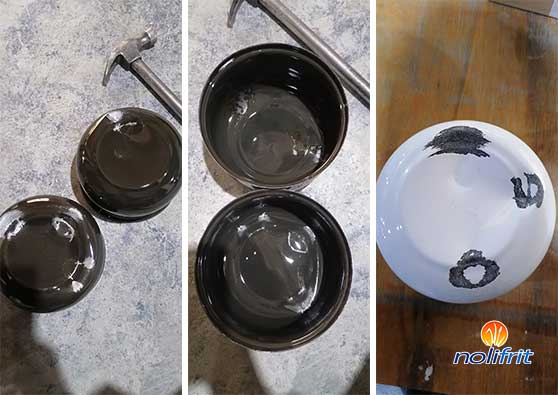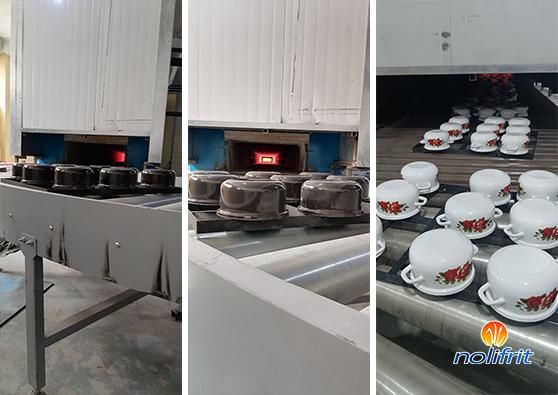How Enamel Factories Can Optimize the Adhesion Performance of Base Glazes
Adhesion is a core performance indicator of enamel products, directly affecting product quality and yield. Some enamel products may appear flawless but reveal significant surface detachment during adhesion testing, clearly failing to meet quality standards. Insufficient adhesion of the Base Glaze not only damages the surface glaze's appearance but also leads to a series of production challenges. When Enamel Factories encounter poor adhesion of Base Glazes, how should they effectively respond?
Taking a certain enamel pot manufacturer as an example, this company, a partner of Nolifrit, struggled for six months during its initial phase without producing qualified products. The enamel pots exhibited Mesh Bubbles during the firing process, and Cold Cracking was present in the handles. Initially, the company wrongly attributed these issues to the firing of the surface glaze. However, after on-site testing by Nolifrit technicians, it was discovered that the Base Glaze had almost no effective adhesion and that the thickness of the enamel layer was generally excessive, primarily due to non-standard enameling techniques.

To improve the adhesion performance of the products, Nolifrit technicians conducted multiple experimental explorations. They gradually increased the firing temperature from 850°C to 880°C while maintaining a firing speed of 2 meters per minute. Calculations indicated that the firing time in the high-temperature zone lasted 4.5 minutes, which should be sufficient for 0.5 mm thick steel plates, yet the firing temperature seemed inadequate. Notably, the standard firing temperature for Base Glazes is 850°C, leading to the preliminary conclusion that the issue might stem from inaccurate furnace temperatures.
In response, Nolifrit technicians proposed a series of improvement measures and solutions:
1. Optimize Metal Pre-Treatment Process: Ensure thorough degreasing of the metal substrates. Experimental data showed that with a quartz content of 20% in the Base Glaze, firing at 910°C achieved a level three adhesion effect, while firing at 920°C improved it to level two, with excellent quality of the Base Glaze surface. Additionally, firing at 830°C for the surface glaze and 800°C for the firing of the porcelain surface yielded good results.

2.Improve Enameling Techniques: Provide on-site demonstrations of the techniques, detailing operational steps and key points to enhance the skill levels of operators.
3.Adjust Base Glaze Formulation: For Base Glazes that are opaque after the first firing, apply a thinner layer of an adjusted formula and re-fire to enhance adhesion performance.
4.Optimize Firing Oil Process Parameters: Adjust the oil firing temperature to 420°C and the firing speed to 2.0 meters per minute, achieving effects comparable to water washing for degreasing, while ensuring no Mesh Bubbles appear at 830°C for the surface glaze and 800°C for the firing of the porcelain surface.
The causes of enamel defects are complex. Experienced enamel factories may identify the root causes and seek solutions independently, but this often requires significant manpower and resources. New Enamel Factories, however, may feel helpless in addressing such issues. Nolifrit, as a professional factory of enamel frits, is committed to its mission: "While pursuing the material and spiritual happiness of all Nolifrit personnel, we use standardized powders to promote the development of enamel factories, working together to make human life healthier and better." We are dedicated to providing quality products and professional solutions to Enamel Factories. If you have related needs, please feel free to contact us!